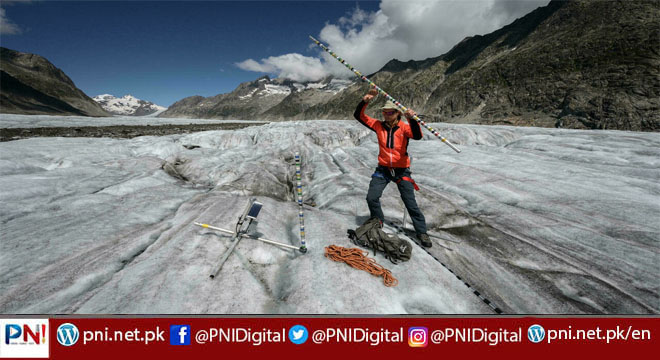Aletsch Glacier, Switzerland, Sept 3 (AFP/APP):After hiking for hours across the mountain and a vast expanse of white, Swiss glaciologist Matthias Huss crouches down near the middle of the massive glacier and checks the measurements.
Analysis of the data gathered from Aletsch, the largest glacier in the Alps, paints a dire picture of the toll that climate change is taking on the behemoth.
Aletsch glacier alone holds about a fifth of the total ice volume found in all of Switzerland’s around 1,800 glaciers.
But over the past decade, the glacier consisting of some 80 square kilometres (32 square miles) of ice and rock has seen 1.5 metres (yards) shaved off its thickness each year.
A cubic kilometre of ice has also melted away during the same time period.
“The change is happening really, really quickly,” Huss told AFP.
The 41-year-old heads Glacier Monitoring in Switzerland (GLAMOS), a scientific network documenting the shrinking of the Swiss glaciers in the face of a warming planet.
“The glaciers are truly a giant and visible thermometer,” he said, pointing out that it is “much more poignant to see a glacier shrinking in volume and thickness than to look at a graph showing temperatures rising.”
“Glaciers are beautiful,” he added, accounting for the often emotional response when people reflect on the shrinking and future disappearance of the ice formations.
GLAMOS scientists monitor around 20 Swiss glaciers each year and have noted that since 2010, the frequency of years with extreme ice loss has accelerated dramatically.
One such year was 2011, the next was 2015, and then 2017, 2018 and 2019 were each record breakers.
Follow the PNI Facebook page for the latest news and updates.








